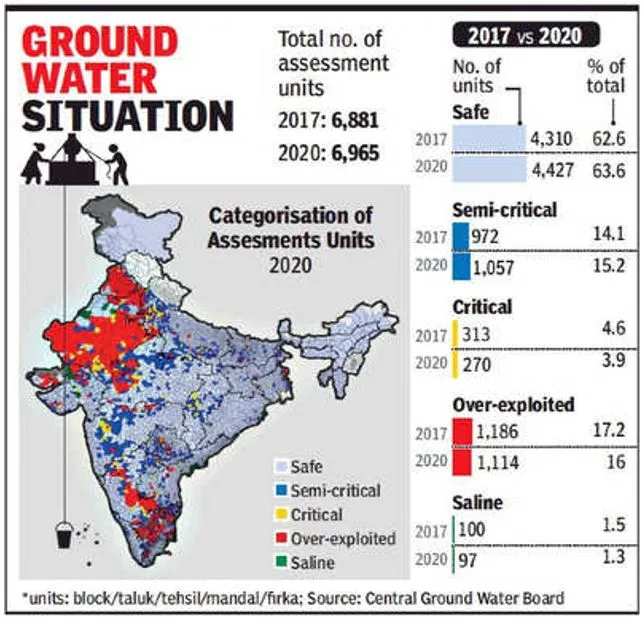

7th August 2024 (8 Topics)
Context
The Punjab government faces a serious funds crunch, and some experts have raised questions over the technical viability of the proposed project.
About the Need for Irrigation Water in Punjab:
- The need for irrigation in Punjab is greater as this is chiefly an agricultural region.
- The total surface area of Punjab is only 1.4% of the total area of India, but it yields approximately 12% of the cereals produced in the country. The major yielded crop is wheat.
Present Concerns:
- The Issue of depleting the water table in the region has increased due to excessive irrigation as 27% area in Punjab was irrigated by canal water and 73%area from groundwater.
- Though the use of canal-based irrigation has slowly picked up in the Malwa region of the state, farmers in Majha largely prefer to depend on tubewells.
- Despite the presence of a sizable network of canals, use needs to be optimized even in Malwa as only 21% water of the Bhakra Main Line (BML) canal, 31% of the Ghaggar branch and 45% Patiala feeder are being used for irrigation by farmers.
- It is estimated that the number of tube-wells has shot up to 12.32 lakh in recent years from only 1.92 lakh in 1970.
- Area under irrigation by groundwater has increased from 55% to 73%, which has become a key concern.
Proposed Malwa Canal:
- Canal Description: A 149.53-km canal named after the Malwa region in Punjab, originating at the Harike Headworks on the Sutlej River.
- Route and Irrigation Impact: Flowing parallel to the Sirhind and Rajasthan Feeder canals, it will irrigate 2 lakh acres in seven districts.
Why New Canals are being built?
- Supplementary Water Supply: The Malwa canal will provide additional water to areas the Sirhind Feeder cannot effectively supply, especially during kharif paddy season.
- Current Supply Issues: The Ferozepur Feeder struggles to supply the Sirhind Feeder, necessitating rotational canal operation.
- Lift Pumps and Groundwater Concerns: Over 300 lift pumps operate on the Sirhind Feeder, with farmers demanding canal water due to polluted groundwater.
Why is Ground water significant?
- Groundwater is the largest source of usable, fresh water in the world.
- In many parts of the world, especially where surface water supplies are not available, domestic, agricultural, and industrial water needs can only be met by using the water beneath the ground.
- Pumping water out of the ground at a faster rate than it is replenished over the long-term causes similar problems.
Impacts of Ground water depletion:
Groundwater depletion is primarily caused by sustained groundwater pumping. Some of the negative effects of groundwater depletion:
- Lowering of the Water Table: Excessive pumping can lower the groundwater table, and cause wells to no longer be able to reach groundwater.
- Increased Costs: As the water table lowers, the water must be pumped farther to reach the surface, using more energy. In extreme cases, using such a well can be cost prohibitive.
- Reduced Surface Water Supplies: Groundwater and surface water are connected. When groundwater is overused, the lakes, streams, and rivers connected to groundwater can also have their supply diminished.
- Land Subsidence: Land subsidence occurs when there is a loss of support below ground. This is most often caused by human activities, mainly from the overuse of groundwater, when the soil collapses, compacts, and drops.
- Water Quality Concerns: Excessive pumping in coastal areas can cause saltwater to move inland and upward, resulting in saltwater contamination of the water supply.
India’s Groundwater usage profile:

More Articles



